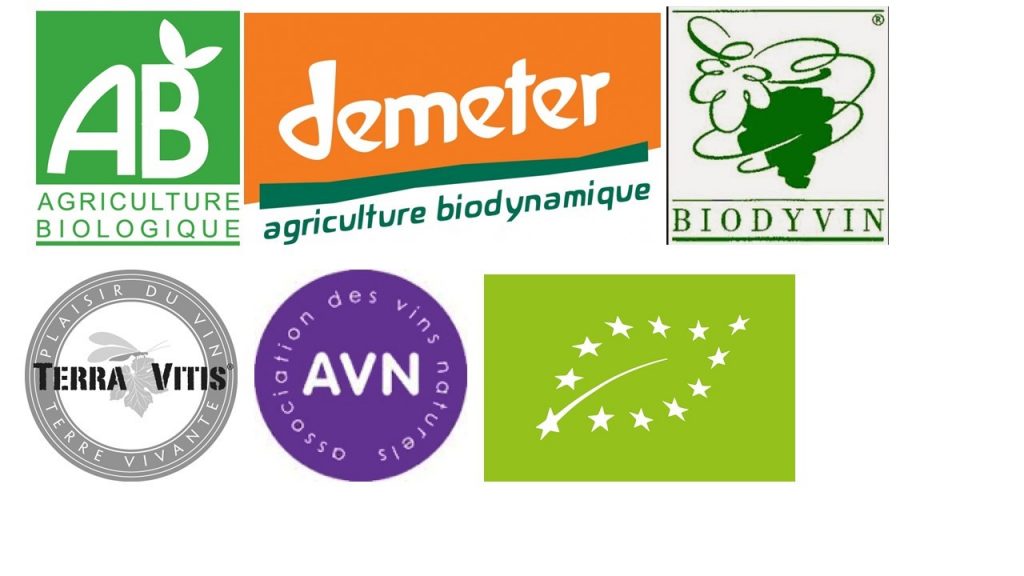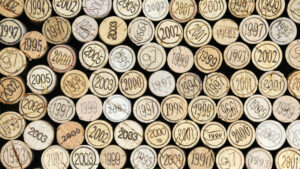
Interest in organic, biodynamic, and natural wines is at an all-time high. Biodynamic and natural wines are making an appearance in wine bars and cavistes all over the world. But what do these terms really mean? Allow us to clear up some of the confusion…
The amount of organic wines produced doesn’t seem to be slowing down. France has become one of the leading viticultural countries in terms of this type of agriculture. More than 90,000 hectares of vines have been converted and some 70,000 are in the process of being converted.
Moreover, global consumption of organic wine is constantly growing with an estimated 976 million bottles sold in 2022, which is an increase of 4.4% compared to the year before. This figure represents 3.5% of the bottles sold across the whole world (which amounts to around 28 billion) compared to 1.5% in 2013. What is more, the number of conventional agriculture, i.e. non-organic vines, is decreasing, (These statistics have come from Statista and IWSR.)
We know that there is a difference between organic, biodynamic, sustainable and natural wines but it is not always clear, Yes, these practices are a step towards looking after the planet and our health, but let’s dig a little deeper…
Sustainable agriculture
Sustainable agriculture aims to limit the environmental impact of agriculture (and viticulture). It aims to use as few chemical products as possible and only treat vines when absolutely necessary as well as ensuring the transparency of all treatments used. This approach has been officially recognized since 2002 and is certified by Terra Vitis.
Organic wines – now even ‘more organic’ thanks to the European Union
Up until 2012, an ‘organic wine’ was in actual fact a wine ‘produced from organic viticulture’, which means that the grapes were grown organically, without pesticides, weedkillers or chemical fertilisers. Only the grapes were thus certified organic. In February 2012, however, laws governing the ‘organic wine’ label were changed by the EU. Now, in order to have this certification, not only do the grapes have to be organic, but so does the method of vinification. A cahier des charges written up by Brussels requires a ‘cleaner’ vinification with, for instance, lower amounts of sulphites allowed in comparison with traditional wines. For dry red wines, the maximum dose of sulphites permitted is 100mg/l whereas the maximum in conventional agriculture is 150mg/l – limits which are still very high. It’s important to remember that an organic wine is not synonym for natural wine, though it can of course be both. The cahier des charges of vinifications also stipulates that only organic additives are allowed, for instance exogenous yeasts – which are allowed in organic vinifications – must be organic. Other additives are simply forbidden, such as malic acid.
Biodynamic wines: the apotheosis of respect for the environment’s natural balance
In order to obtain biodynamic certification from Demeter or Biodyvin, you must first be certified organic (or be in the process of gaining certification). Organics and biodynamics therefore share some common ground, though biodynamics goes much further in that it prescribes respect for natural cycles and the life – biodiversity – of the domain as a whole. This much more holistic approach, of a way of life and agriculture in harmony with nature, includes some spiritual elements. The ecosystem functions as a whole, with each portion of the farm or vineyard contributing to the next. The idea is to create a self-sustaining system. Natural materials, soils, and composts are used to sustain the vineyard. Chemical fertilizers and pesticides are forbidden for the sake of soil fertility. A range of animals from ducks to horses to sheep live on the soil and fertilize it, creating a rich, fertile environment for the vines to grow in. Austrian philosopher Rudolf Steiner started the idea of biodynamic agriculture in the early 1920s. This early 20th century philosopher also promulgated the use of agricultural practices based on the lunar calendar and astrological influences.
These are the more controversial aspects of biodynamic viticulture today: its proponents are sometimes said to be fanatics, yet for many tasters, organic and biodynamic wines have the upper hand on their conventional counterparts in their organoleptic qualities.
No, natural wines aren’t 100% no sulphur
Contrary to popular opinion, there’s no such thing as a wine without sulphur. In fact, the fermentation process itself – as the yeast transforms the sugar into alcohol – produces SO2 (Sulphur dioxide). These ‘natural’ wines are supposed to contain very few sulphites, or none at all. For some natural wine producers, the aim is to never add more than 40mg/l to white wines and no more than 30mg/l to red wines; for others, it means adding no sulphites at all. In reality, there is no official body to control what can and can’t be called a natural wine (as is the case for organic and biodynamic). The Association for Natural Wines (AVN) has tried to put together an official definition, not without difficulty. In short, their definition is an organically or biodynamically produced wine which only uses ambient yeasts in vinifications, forbids ‘brutal’ practices such as inverse osmosis, flash pasteurization or thermovinification and doesn’t allow the addition of sulphites or other additives.
As a reminder, sulphur is used during vinification and élevage for its antiseptic and antioxidant properties, stabilising the wines so that they don’t start a second fermentation in the bottle caused by leftover yeasts or bacteria. Wines with a total absence or low amount of added sulphur must be vinified (and then stored) in absolutely impeccable conditions.



